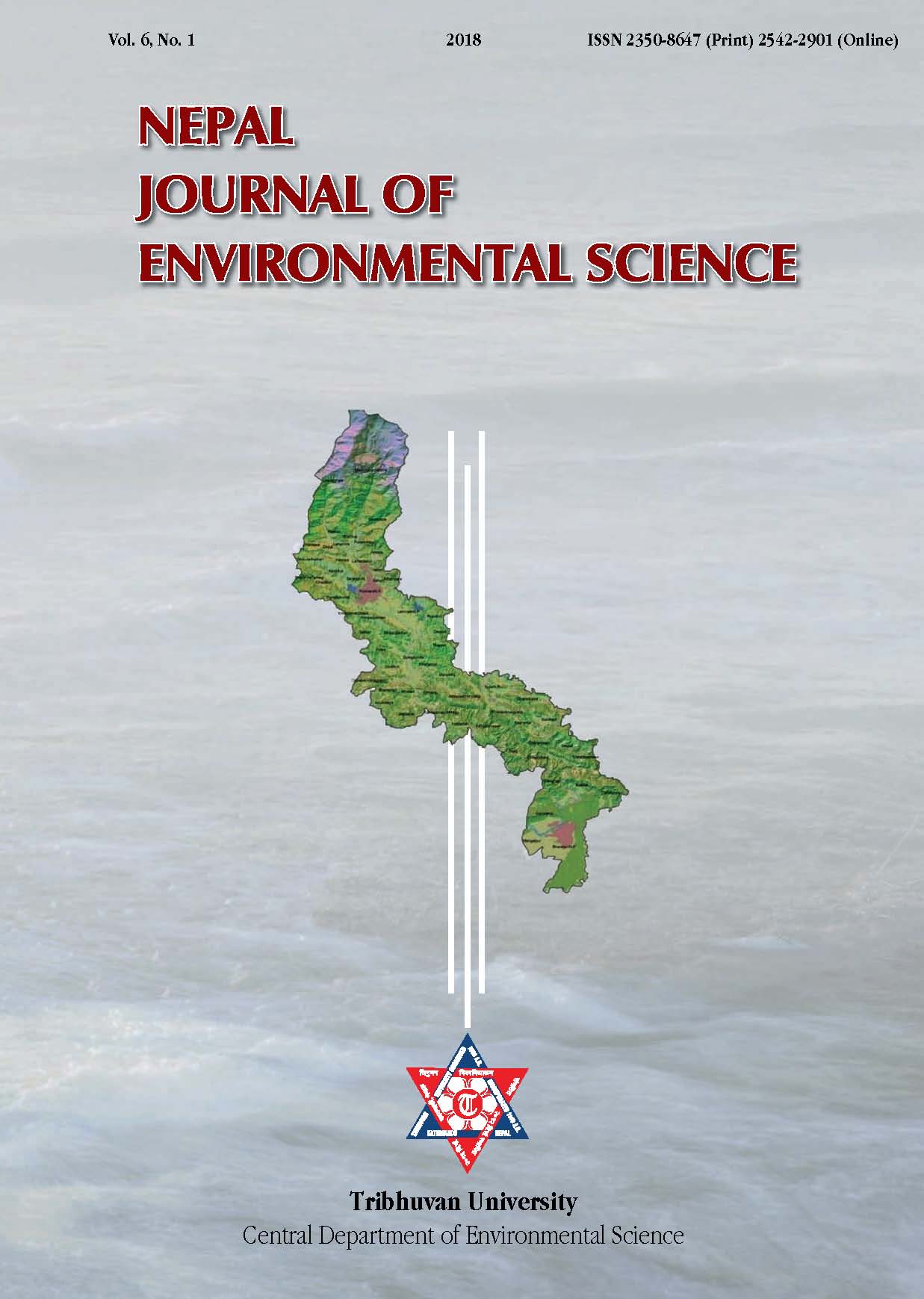Climatic variability and livelihood of rural farmers in Chisapani, Ramechhap, Nepal
DOI:
https://doi.org/10.3126/njes.v6i0.30126Keywords:
Adaptation, Agriculture, Climate change, Drought, Historical rainfallAbstract
Agriculture is the mainstay of livelihood of the people in rural Nepal. Any perturbations in agriculture stemming from climatic and/or non-climatic factors can affect their livelihood. Farmers keep on exploring alternative practices in agriculture to adapt to increasing uncertainties and some of which can be scaled out to enhance resilience of the agricultural system. An exploratory study was done in one of the most vulnerable districts of Nepal, Ramechhap. The objective was to assess the effects of local livelihood owing to climatic variability. Ninety-one farm households were selected using purposive random sampling and information was collected through semi-structured questionnaire along with key informant interviews and focus group discussions. Historical weather data, particularly of rainfall, were analyzed to see the rainfall pattern and linked to agriculture production over time. Almost nine out of 10 farm families were marginal farmers and 60% of the household face food deficit half a year. Most of the respondents reported changes in climate and agriculture production practices. Historical rainfall data confirmed that the rainfall trend was declining by 13.77 mm per year. The average rainfall of the nearest station (Manthali) was 1008 mm, which is almost half of the national average. Since rain-fed farming predominates in the area, drought events have negatively affected agriculture and local livelihood. Due to drought 18% of the paddy land was converted to Bari land. Similarly, cold spells along with increasing foggy days aggravated the occurrence of pest and diseases affecting winter crops far more than what it used to be. Landraces of many crops had disappeared and new invasive species started appearing in the farmlands. Farmers had shifted from large animals to smaller ones as a coping strategy. Adoption of new crop varieties, crop rotation, rainwater harvesting and use of plastic tunnel in vegetable farming were the major new practices introduced in the area which have a greater potential for out- and up-scaling. However, strong institutional supports are required to build stakeholders (including farmers) capacity to experiment with adaptive strategies.
Downloads
Downloads
Published
How to Cite
Issue
Section
License
This license enables reusers to distribute, remix, adapt, and build upon the material in any medium or format for noncommercial purposes only, and only so long as attribution is given to the creator.

